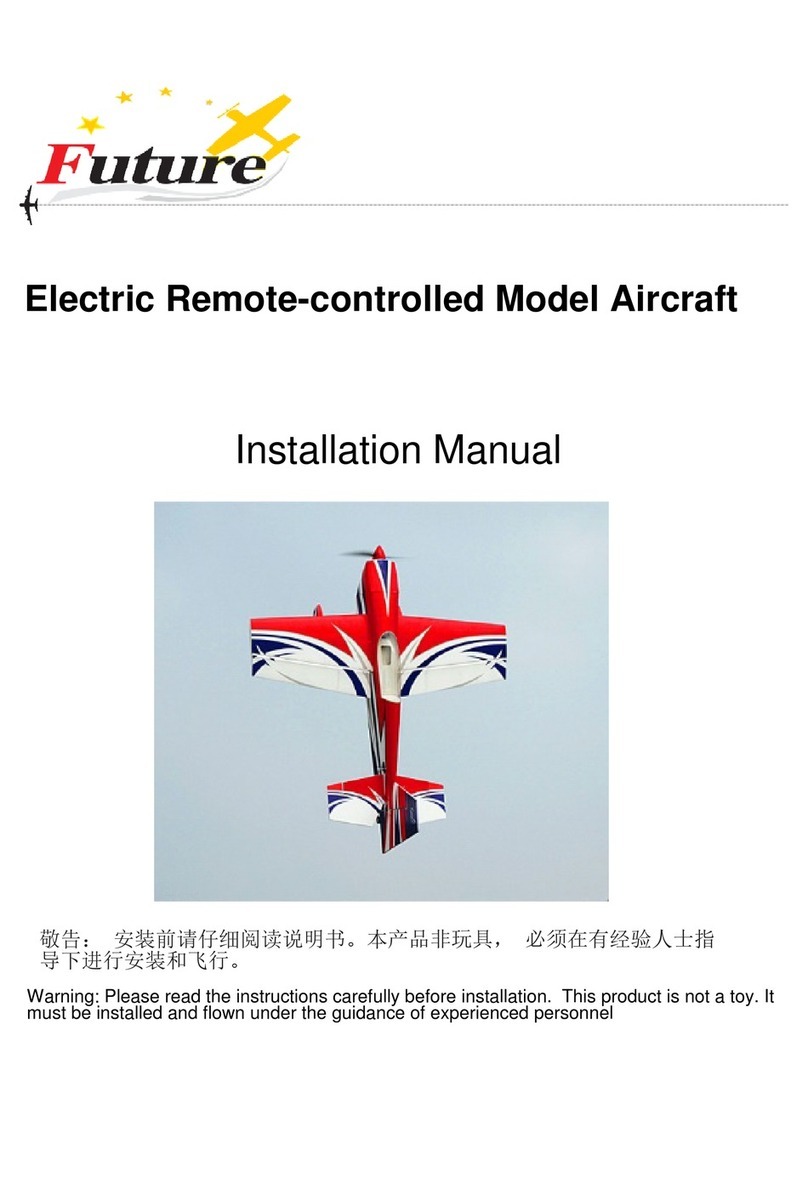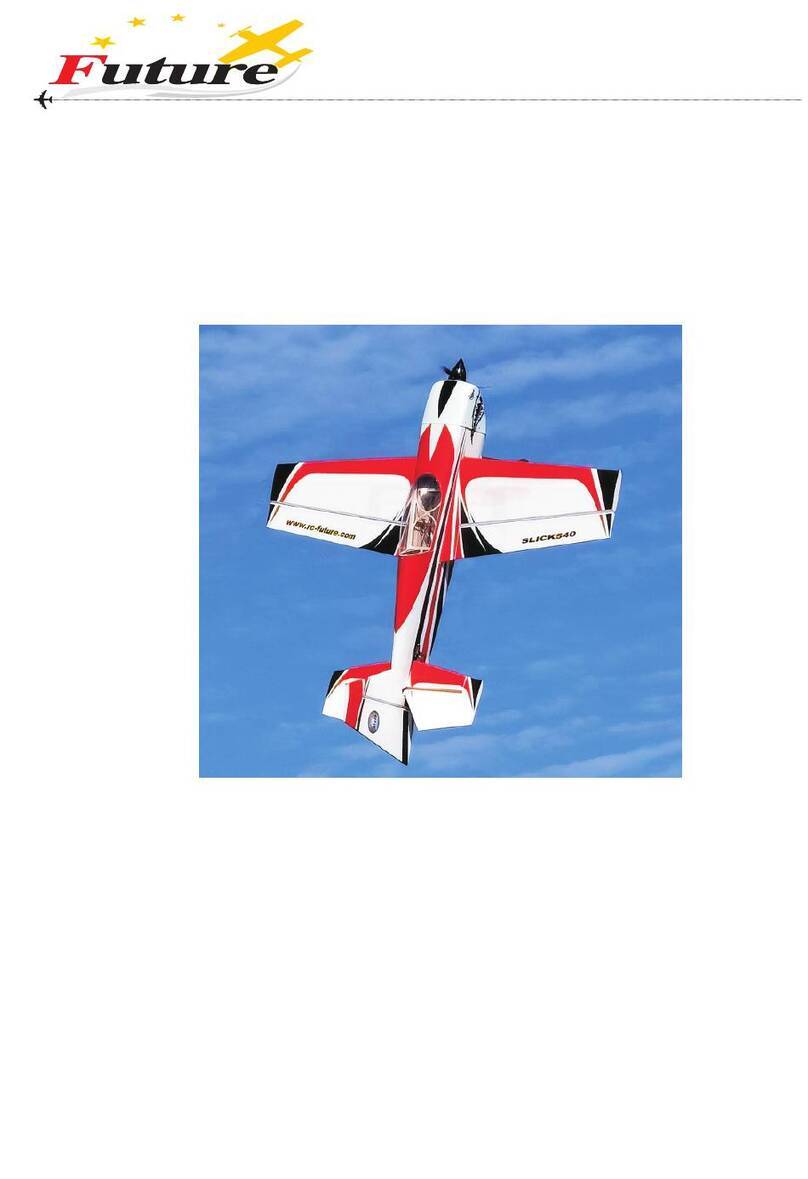
Please open the package and check that it contains all required parts.
If any parts are missing, please contact the dealer.
Wingspan: 965mm
Length: 980mm
Wing area: 20.4 dm2
Total weight: about 630 g (including a 3s1000 mAh 25c battery)
Center of gravity position: 95mm from the wing leading edge
Reference Power Confifiguration:
Brushless motor: 2216 2217 2834 (KV 1200)
ESC: 35 A
Propeller: 10 x 4.7
Lithium battery: 3s (1000 to 1500 mAh) 25c battery
Servos: 9g plastic gear x 4 (Metal gear servos are recommended for aggressive flflying)
Control Surface Deflflections:
Ailerons: high rates: 40 degrees, low rates: 25 degrees
Elevator: high rates: 45 degrees, low rates: 25 degrees
Rudder : high rates: 45 degrees, low rates: 25 degrees
Flight Precautions:
Please observe the following:
1. Do not flfly in bad weather with poor visibility.
2. Do not flfly near crowds, high-voltage lines or in areas with strong electromagnetic interference.
3. Do not flfly near tall buildings, trees, street lights or other obstructions.
4. If you are flflying for the fifirst time, please flfly under the guidance of an experienced person.
5. Remember, a model airplane is not a toy and you are solely responsible for flflying safely.
Storage Precautions:
1. Remove the battery before storing the model to prevent the risk of explosion or combustion.
2. Do not put objects on the model - hang it up if possible.
Note: Due to continuous product updates, the manual and actual products may
have small errors or differences.




























